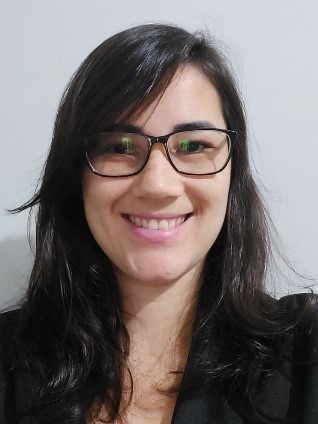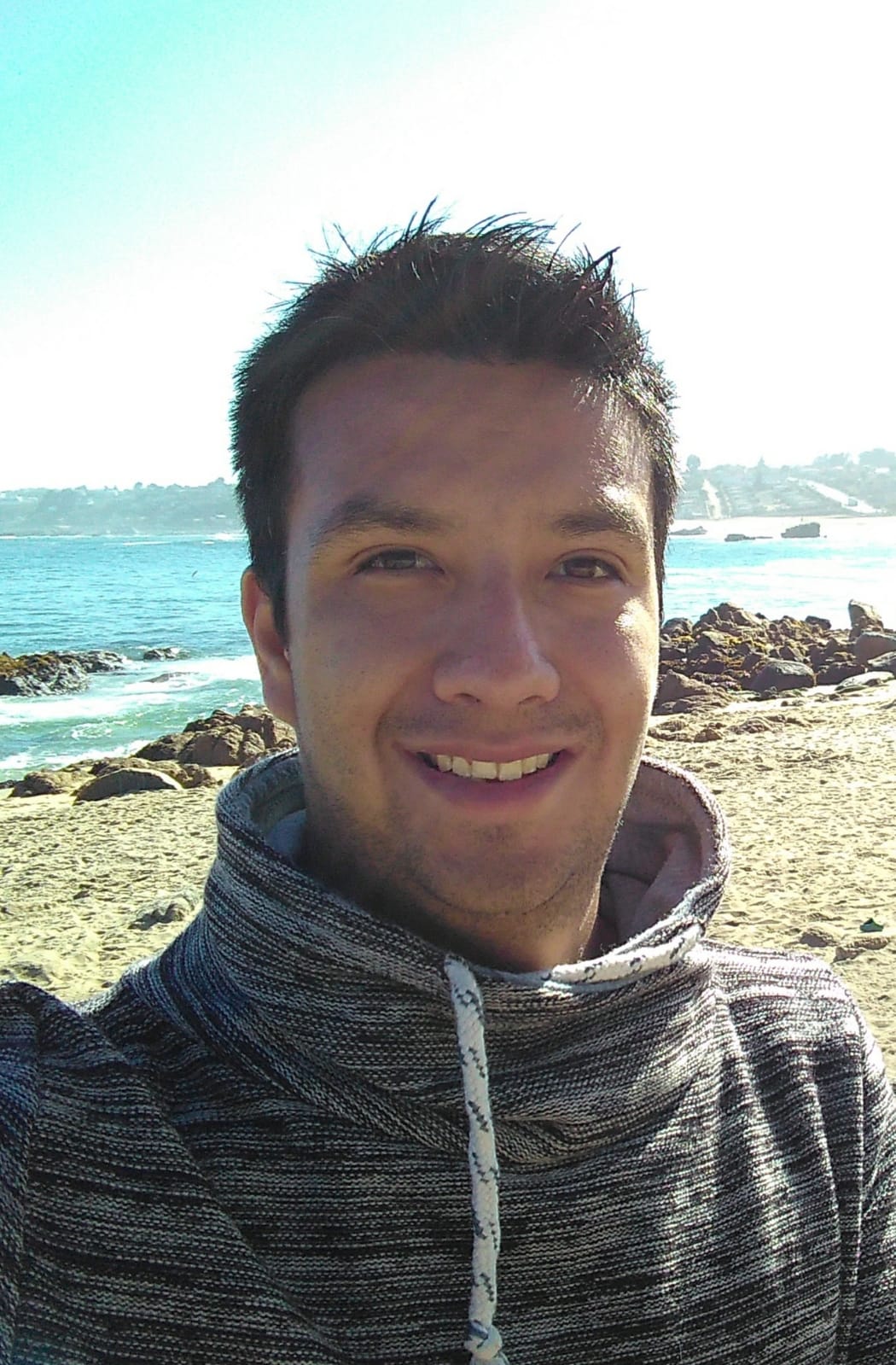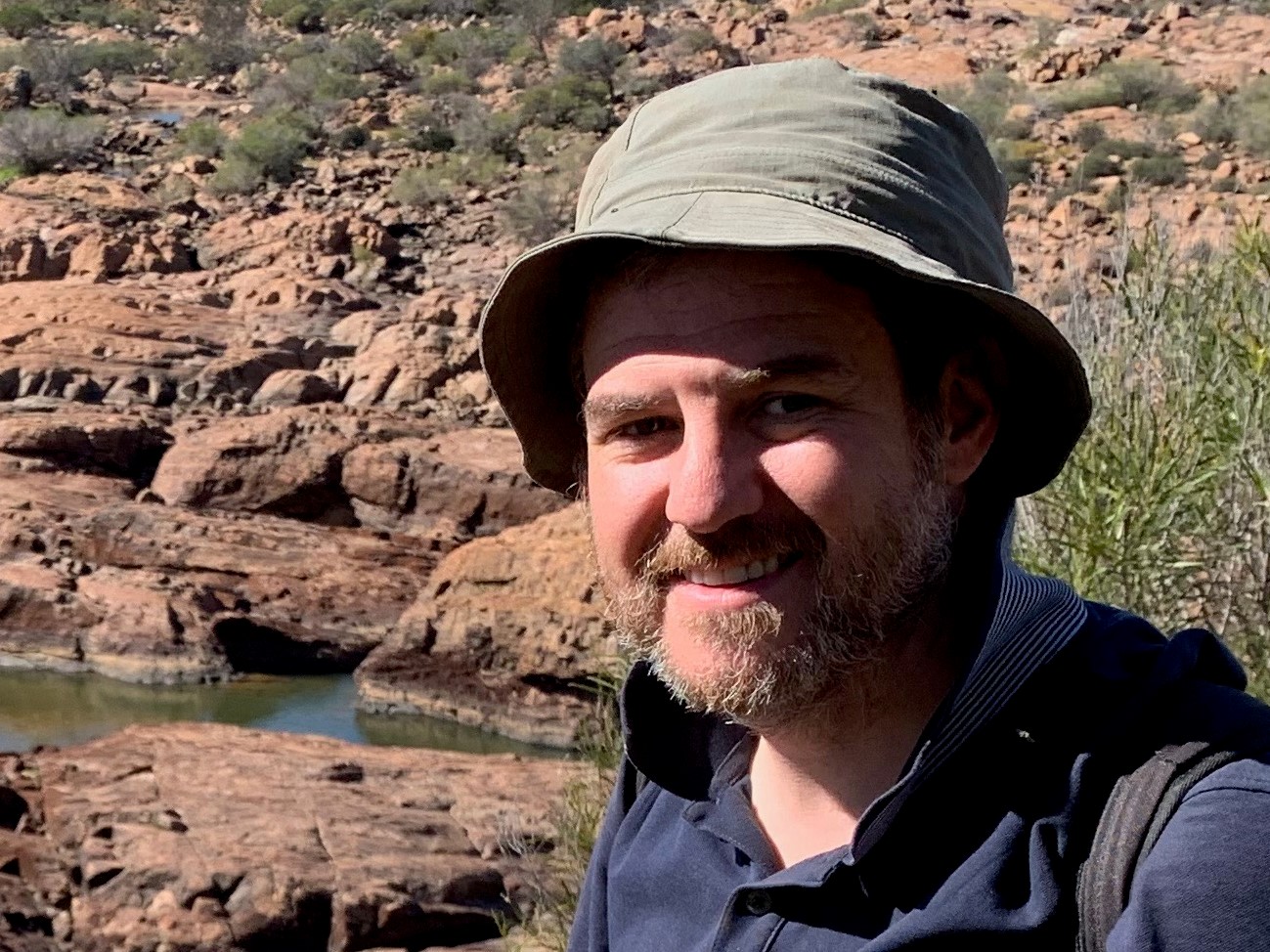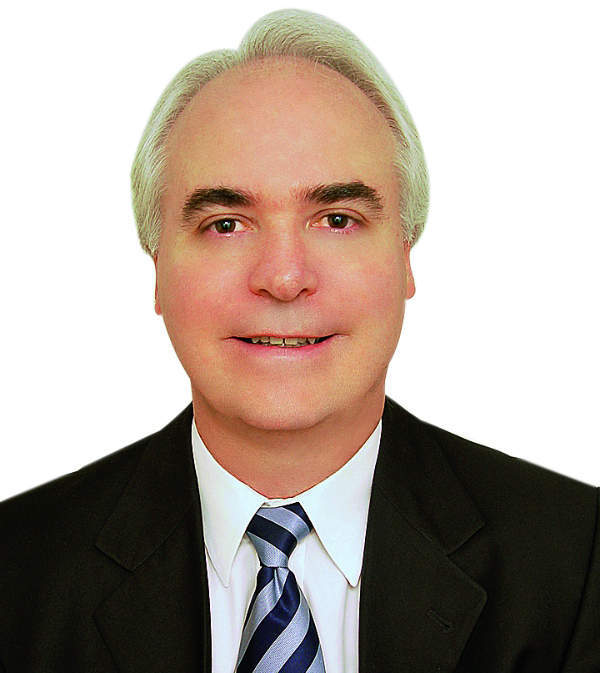
All short courses presentations will be live on Zoom platform.
| Workload | Timetable | Instructor |
| 8 hours | 8am-noon | Otavio Gandolfo (Instituto de Pesquisas Tecnológicas-IPT) |

Graduated in physics (PUC de São Paulo) and geophysics (IAG-USP). Master in Geoscience (UNESP-Rio Claro). PhD in Geosciences (IGc-USP.) Researcher, since 2005, of the Technological Research Institute of the State of São Paulo - IPT. He has been working for 32 years with geophysics applied to engineering geology, geotechnics and environmental studies.
| Workload | Timetable | Instructor |
| 4 hours | 8am-noon | Iago Costa (SGB-CPRM) |

Graduated in Geophysics from the University of Brasília (UnB), with Masters in Applied Geosciences and Geodynamics (UnB) where developed a multi-frequency seismic tomography model focused on Amazonian Craton. Work in the Geological Survey of Brazil (SGB-CPRM) for 8 years, where he acted in the geophysical characterization of mineral deposits, South Atlantic geodynamics, statistical behavior and estimation of undiscovered mineral deposits, Data Science and Machine Learning techniques in geoscientific problems. He currently acts as Executive Coordinator of the Directory of Geology and Mineral Resources. He also serves today as a regional advisor to the Brazilian Geophysical Society.
| Workload | Timetable | Instructor |
| 7 hours | 8am-noon | Ricardo Nicácio (Halliburton) |

Geophysicist (UFF) and Seismic Stratigraphy Specialist (UERJ/EQUINOR/ANP) with more than 8 years of experience in Oil&Gas industry working with Seismic interpretation support. Experience in hydrocarbon prospect evaluation, stratigraphy, AVO, fluid substitution, velocity modeling, seismic well tie, AVO, prestack interpretation, log analysis, as well as the full petroleum exploration workflow applied in North of Santos Basin (Brazil).
| Workload | Timetable | Instructor |
| 7 hours | 8am-noon | Mark Jessel (The University of Western Australia) |

Mark Jessell is a Professor and Western Australian Fellow at the Centre for Exploration Targeting, School of Earth Sciences at The University of Western Australia and was previously based in Toulouse, France where he was a Director de Recherche with the Institute de Recherche pour le Development, and where he started the West African Exploration Initiative (WAXI).
| Workload | Timetable | Instructor |
| 4 hours | 8am-noon | Gabriela Marinho (Emerson Automation Solutions) |

Geologist graduated from the Rio de Janeiro State University (UERJ), with 6 years of experience in the oil & gas industry. In Emerson, she works as technical consultant for multidisciplinary workflows dealing with seismic interpretation and geologic modeling. Currently, she is based in Buenos Aires, supporting G&G projects in Brazil, Argentina and Bolivia. She specializes herself in velocity modeling and reservoir characterization.
| Workload | Timetable | Instructor |
| 12 hours | 8am-noon | Naser Meqbel (ON/ModEM Geophysics) |

Dr. Naser Meqbel received his master’s degree in geophysics from Cologne University (Germany) and obtained the Doctoral title from Freie University of Berlin in collaboration with the Research Centre for Geoscience-Potsdam, Germany (GFZ). His main research topics include 2D and 3D modelling of electrical and electromagnetic data. Together with Prof. Egbert, he is also a developer of ModEM code. In collaboration with scientists and students at National Observatory of Brazil in Rio de Janeiro, Dr. Meqbel is involved in a research project to develop a 3D inversion code for Multi marine EM data; A research project funded by ShellBrazil. In addition to his scientific contributions, Dr. Meqbel is a consultant for 3D EM methods for geothermal and mineral exploration firms worldwide.
| Workload | Timetable | Instructor |
| 4 hours | 8am-noon | Andrew Roberts (Australian National University) |

Andrew P. Roberts is a Professor at the Australian National University in Canberra, Australia. His research spans environmental magnetism, rock magnetism and paleomagnetism, with extensive applications in addressing research questions in paleoclimate and paleoceanography. He has supervised more than 60 graduate students and post-doctoral researchers and has authored and co-authored more than 270 papers in peer-reviewed international scientific journals. He is a Fellow of the American Geophysical Union (AGU) and an Honorary Fellow of the Royal Society of New Zealand. He was awarded the 2019 Axford Medal by the Asia Oceania Geosciences Society for research excellence and unselfish cooperation and leadership in the region and was the 2020 AGU Edward Bullard Lecturer.
| Workload | Timetable | Instructor |
| 4 hours | 8am-noon | Raisa Carvalho and María Gonzalez (Emerson Automation Solutions) |

Raisa Carvalho
Graduated in geology from the Federal University of Espírito Santo (UFES), with a postgraduate degree in Oil and Gas Engineering (UCL). She is currently pursuing a Masters degree in Geology and Geophysics in the Fluminense
Federal
University (UFF) focusing on characterization of pre-salt carbonate reservoirs. She has 9 years of experience in the oil industry with Emerson E&P. Since her incorporation in Emerson has worked as a Technical Consultant SAM in
companies
such as Petrobras, YPFB, YPF and Repsol, with emphasis on interpretation and structural seismic characterization, supporting the most varied projects in Latin America (Brazil, Bolivia and Argentina).

María González
María is a geophysicist with 15 years of experience in modeling and reservoir seismic characterization. She joined Emerson in 2007 and has participated in several exploration and production projects for Latin America, focusing on
the
Brazilian Pre-Salt reservoirs the last five years. Currently, she specializes in velocity modeling applied to seismic processing and structural uncertainty assessment. Maria is graduated in Geophysical Engineering from Universidad
Simón
Bolívar and holds a Master’s degree in Geophysics from Universidad Central de Venezuela.
| Workload | Timetable | Instructor |
| 4 hours | 8am-noon | Thiago Garbelini Cuzzatti (Emerson Automation Solutions) |

Thiago has a degree in Geology from the Federal Rural University of Rio de Janeiro(UFRRJ), and has worked as a Geophysicist for at least 11 years. He is currently pursuing a Masters degree from UFF whose focus is based on turbidite studies in the post-salt. The main area of work is in Machine Learning and study of characterization of facies. In Emerson he has already worked supporting several companies, like PETROBRAS, REPSOL, YPF in the most varied projects in Latin America (Brazil, Bolivia and Argentina).
| Workload | Timetable | Instructor |
| 8 hours | 8am-noon | Stephane Operto (Geoazur) |

S. Operto received an engineering degree (1990) from ENSAM (Paris) and a Ph.D. (1995) in marine geophysics from the University Pierre et Marie Curie (Paris 6). He was a postdoctoral fellow in the Institute for Geophysics of the University of Texas–Austin 1995 and in the Institute for Geophysics of the Paris School of Mines in 1996–1997. In 1998, S. Operto joined CNRS as a research scientist. His professional interests are wave-propagation modeling, slope tomography and full-waveform inversion (FWI). He led the SEISCOPE consortium devoted to Full Waveform Inversion (FWI) with J Virieux between 2006 and 2013 and is currently involved in the WIND consortium devoted to waveform inversion for sparse node acquisition. He was associated editor of Geophysics journal between 2009 and 2019. He received the EAGE Louis Cagniard award in 2015 and the best Geophysics paper award in 2008 and 2014 (honorable mention). He is a member of SEG and EAGE.
| Workload | Timetable | Instructor |
| 8 hours | 8am-10am | Rogelio Torres (UNAM) |

Rogelio Torres Cuenca es Ingeniero Geofísico por la Universidad Nacional Autónoma de México, Magister en Ciencias y estudiante del Doctorado por la Universidad de Chile. Cuenta con cursos hidrogeológicos, sísmicos, estructurales y geotécnicos para comprender la interacción entre los suelos, los sismos y las estructuras. Participó en el Servicio Sismológico Nacional en México (SSN) y trabajó en el Instituto de Ingeniería de la UNAM. Es Profesor Auxiliar de materias como Sismología y Sismología Aplicada en la Universidad de Chile. Es responsable de adquisición y procesamiento sísmico en la empresa SEGEOS y 128Hz. Actualmente es miembro activo de CERESIS.
| Workload | Timetable | Instructor |
| 8 hours | 8am-noon | Carlos Eduardo Seabra (Halliburton) |

Carlos Seabra is geologist graduated in 2012, at Federal Rural University of Rio de Janeiro. Started his carrer at Halliburton in 2012 as G&G consultant. His experience as an exploration geologist include 8 years providing solutions for Petrobras to optimize reserves estimation. Over the past four years, his main focus has been on geological modeling and fractures. Experience in Santos Basin and Pará-Maranhão Basin.
| Workload | Timetable | Instructor |
| 8 hours | 2pm-6pm | Leonardo Teixeira (Petrobras) |

Leonardo Teixeira works at Petrobras where he has served as reservoir geophysicist for 12 years. He graduated in Universidade Estadual do Rio de Janeiro, with bachelor degrees in Physics. Currently, he is PhD candidate at Universidade Federal Fluminense. Leonardo brings along with him more than one-decade experience in quantitative seismic interpretation. His perspectives in seismic quantification for reservoir characterization have granted him the opportunity to work on world-class presalt reservoirs, which include Tupi and Buzios fields, post-salt turbidites and evaporites. He is enthusiastic about sharing knowledge with colleges and researchers, being committed to preparing and teaching more than 1000-hours in-house training.
| Workload | Timetable | Instructor |
| 6 hours | 09am-12h15am; 2pm-5:15pm/td> | Roberto Teixeira Luz (Instituto Brasileiro de Geografia e Estatística – IBGE |

Roberto Teixeira Luz has been working in Geodesy for 36 years, mainly at the Geodesy branch of Brazilian Geography and Statistics Institute (IBGE), where he is currently Head of the Gravimetry and Geoid Team. He is also a Professor of the Cartographic Engineering Department of the Rio de Janeiro State University (UERJ). He is Cartography Engineer (UERJ), MSc in Coastal and Oceanographic Engineering (COPPE-UFRJ), and PhD in Geodetic Sciences (UFPR). He is a member of the Working Group on Vertical Datum of the SIRGAS Project since its creation in 1997, acting as its President from 1997 to 2001 and from 2008 to 2013.
| Workload | Timetable | Instructor |
| 4 hours | 8am-noon | Carlos Calderón (ION Geophysical) |

Carlos Calderón-Macías graduated with a PhD in Geophysics from the University of Texas at Austin (1997) and a bachelor’s degree in Geophysical Engineering from the National University of Mexico (UNAM). He currently works as Senior Geophysicist for ION Geophysical, Houston Office. He has more than 20 years of experience advising projects and doing research in topics like seismic multicomponent, imaging and velocity model building. Within ION, Carlos has participated in helping develop solutions for regional 3D seismic marine exploration programs, developing tools for evaluating and designing acquisition geometries, and has actively participated in educational courses and workshops.
| Workload | Timetable | Instructor |
| 4 hours | 8am-10am | Carlos Chaves, Marcelo Bianchi, Isabella Gama, Bruna Chagas de Melo U. USP, Brown, Dublin Institute |

Carlos Chaves is an Assistant Professor at the University of Sao Paulo with research focus on determining deep earth structure and dynamics from seismology techniques. His recent efforts have focused on 1. Using regional and global tomography for imaging structures within the Earth’s mantle; 2. 3D numerical seismic wave simulations along with observed data to improve our understanding of Earth’s interior.

Marcelo Bianchi is currently professor at the Instituto de Astronomia, Geofísica e Ciências Atmosféricas from Universidade de São Paulo, where he develops research in the area of seismology, basically with the development of methods for detecting seismic events and studies of crust and mantle structure. He has experience with different programming languages and has been working with Python since 2010, when he joined GeoForschungsZentrum as a researcher within the GEOFON group. In Python, it has been developing from small processing scripts, to large, complex object-oriented programs to manage and process seismological data.
Bruna Chagas de Melo is a Brazilian PhD student at the Dublin Institute for Advanced Studies. Her main research is on Waveform Tomography applied to South America focused on the seismic interpretation of upper mantle structures.

Isabella Gama is PhD student in Seismology at Brown University, USA Isabella is interested in understanding the lithosphere structure of subduction zones, using a combination of body and surface wave data. Now in the fourth year of her doctorate, her recent work is focused on how subduction affects the upper plate and its thickness, as well as how volcanism is produced or inhibited in Alaska.
| Workload | Timetable | Instructor |
| 4 hours | 2pm-6pm | Alan Mur (IKONSCIENCE) |

Dr. Alan Mur has a PhD in Geology with specialization in Geophysics from the University of Pittsburgh and has over a decade of work experience in geology, rock physics, and geophysics. Alan has executed quantitative interpretation projects on and offshore in conventional and unconventional environments across North America, South America, Africa and North Sea and has consulted on numerous projects as a reservoir characterization and seismic inversion specialist. As Product Champion at Ikon Science, he provides training, technical guidance, and project consulting while working closely with software clients and the Ikon software development team to evolve the software with consideration for the needs of our industry.
| Workload | Timetable | Instructor |
| 8 hours | 8am-noon;1pm-5pm | Sergey Fomel and Zoltan Sylvester (University of Texas at Austin) |
Sergey Fomel is a Professor at the Jackson School of Geosciences, the University of Texas at Austin, with a joint appointment between the Bureau of Economic Geology and the Department of Geological Sciences.

Zoltán Sylvester is a Research Scientist at the Bureau of Economic Geology (Jackson School of Geosciences, University of Texas at Austin). He is the co-PI of the Quantitative Clastics Laboratory and his research focuses on the geomorphology and stratigraphy of clastic depositional systems. He has a PhD from Stanford University and has previously worked in research labs in the energy industry.
| Workload | Timetable | Instructor |
| 8 hours | 8am-noon;1pm-5pm | Pedro Mário Cruz e Silva (NVidia) |

Pedro Mário Cruz e Silva is a Mathematician with Ph.D. in Computer Graphics at PUC-Rio. Worked at Tecgraf Institute/PUC-Rio as a researcher and project manager of the Computational Geophysics Group. Was responsible for several software developments and R&D projects for the Oil&Gas industry, with a strong focus on innovation. He is also a master in business administration at Getúlio Vargas Foundation and a volunteer member of the main board of The Brazilian Geophysical Society. Nowadays, is a Solution Architect Manager at NVIDIA responsible for all technologies in the Latin America Region.
| Workload | Timetable | Instructor |
| 16 hours | 8am-noon | Herbert Rendón (CERESIS/ Fundação Venezuelana de Investigações Sismológicas) |

Degree in Physics from Universidad Central de Venezuela (UCV), March-1980.
M.Sc. degree in Geophysics and Space Sciences form University of California at Los Angeles (UCLA), USA, July-1990.
Ph.D. degree in Geophysics and Space Sciences from University of California at Los Angeles (UCLA),
USA, July -1993.
Seismologist at the Venezuelan Foundation for Seismological Research
Lecturer/Professor on Seismology at the M.Sc. and Ph.D. program of the Facultad de Ingeniería (oriented to civil engineering) at UCV
Lecturer on seismologist courses under CERESIS (Centro Regional de Sismología para Sur America based on Lima-Perú)
On-Site Inspection activities under the CTBTO (Comprehensive Ban Treaty Organization base on Vienna-Austria)
| Workload | Timetable | Instructor |
| 8 hours | 8am-noon;1pm-5pm | João Paulo Navarro (NVidia) |

João Paulo Navarro is a Computer Scientist and M.Sc. in Computational Modeling by UFJF. He has experience in research and development working with Machine Learning, Visual Computing, Physical Simulation and High Performance Computing. He is currently a professor in the graduate course in Artificial Intelligence with Deep Learning at the Polytechnic School of USP and Solution Architect at NVIDIA, focusing on the design of high-performance solutions for Machine Learning and Data Analytics.
| Workload | Timetable | Instructor |
| 8 hours | 8am-10am | Marcelo Bianchi (USP), Fabio Dias (ON) and George Sand (UnB) |

Marcelo Bianchi is currently professor at the Instituto de Astronomia, Geofísica e Ciências Atmosféricas from Universidade de São Paulo, where he develops research in the area of seismology, basically with the development of methods for detecting seismic events and studies of crust and mantle structure. He has experience with different programming languages and has been working with Python since 2010, when he joined GeoForschungsZentrum as a researcher within the GEOFON group. In Python, it has been developing from small processing scripts, to large, complex object-oriented programs to manage and process seismological data.

George Sand França is professor from Observatório Sismológico at the Universidade de Brasília where he develops research focusing on crustal structure, natural seismicity and reservoir triggered seismicity. Recently, has started to use Python as a working language while teaching it at the university and on his own research. He also carries out different scientific dissemination and outreach activities related to seismology and scenic arts.

Fábio Dias is a researcher linked to the Observatório Nacional in Rio de Janeiro within the Brazilian Seismographic Network (RSBR). He has experience in seismicity, crustal structure and lithospheric stress-fields studies. Currently he works with Ambient Noise Tomography inside projects related to the Observatório. He is familiar with Python, C and Bash programming languages.
| Workload | Timetable | Instructor |
| 8 hours | 8am-noon;1pm-5pm | Arthur Ayres Neto (UFF) |

Associate Professor in Marine Geology and Geophysics with emphasis on geological and geotechnical characterization of the seafloor with acoustic techniques at the Fluminense Federal University (UFF) since 2006. B.Sc in Geology (Federal University of Rio de Janeiro – UFRJ, 1988); M.Sc. in Marine Geology and Geophysics (UFF, 1993); Ph.D in Marine Geophysics (Kiel University, Germany, 1999). Worked for 19 years on the offshore industry with geophysical surveys in the development of subsea engineering projects.
| Workload | Timetable | Instructor |
| 4 hours | 8am-noon | Andy Biggin (University of. Liverpool) |

Andy Biggin obtained his PhD in palaeomagnetism in 2001 and subsequently worked in labs in UNAM (Mexico), Montpellier (France) and Utrecht (The Netherlands) before obtaining a NERC Advanced Fellowship to work at the University of Liverpool in 2009. On completion of this in 2014, he was appointed as lecturer in geophysics and became a full professor in 2016, taking over the lead of the Liverpool Geomagnetism Laboratory, established 50 years earlier. In 2017, he used a Research Leadership Award of £1million from The Leverhulme Trust to establish the DEEP (Determining Earth Evolution from Palaeomagnetism) research group. The research of DEEP is focussed on obtaining and improving records of ancient geomagnetic field behaviour using their signals recorded in rocks of all ages, and also of capturing this behaviour in numerical models so as better to understand the implications for deep Earth dynamics and evolution. Andy Biggin teaches solid Earth and near-surface geophysics across all years of several undergraduate programmes at the University of Liverpool. He also holds numerous administrational roles both within the university and more widely including being on the editorial board of Geophysical Journal International.
| Workload | Timetable | Instructor |
| 8 hours | 9am to noon and 2pm to 5pm | Marcos Hexsel Grochau (Petrobras) |

Marcos received Bachelor’s degree from UFRGS University (Porto Alegre, Brazil), obtained his Master’s degree from UNICAMP and the Science Academy of Czech Republic (Prague), and PhD from Curtin University
(Australia).
His background includes seismic acquisition, processing, interpretation and reservoir characterization. He has been working for the last 15 years in reservoir characterization, volumetric seismic interpretation and
visualization, and
participation in time-lapse (4D) interpretation on several hydrocarbon fields.
He has a book available on Amazom.com published by Lambert Editors on Time-Lapse Seismic.(http://www.amazon.com/INTEGRATED-APPROACH-IMPROVE-TIME-LAPSE-INTERPRETATION/dp/3838322118 ). He has papers
published
in Geophysics,
The
Leading Edge, Geophysical Prospecting among other Journals, and presentations at SEG and EAGE conferences. He received Awards of Merit: from SEG at the 2007 SEG Conference, San Antonio, USA. He was a coordinator of a
strategic research
applied projects in Petrobras aiming to apply 4D seismic in carbonate reservoirs.
| Workload | Timetable | Instructor |
| 8 hours | 8am-noon;1pm-5pm | Luiz Antonio Pereira de Souza (Instituto de Pesquisas Tecnológicas – IPT) |

Work at Institute for Technological Research of Sao Paulo State since 1981. Doctor Degree on Geology & Oceanography from Oceanographic Institute of Sao Paulo University. Specialized on shallow water geophysics for engineering geology (rivers, lakes, harbors and near shore areas). Author of the book: Applied Geophysics for Engineering Geology and Environment. 2021.
| Workload | Timetable | Instructor |
| 4 hours | 8am-noon | Maxwell Meju (Petronas) |

Max Meju received an MSc in geophysics from Imperial College London (1984) and a PhD in geophysics from University of Edinburgh (1988). He was a lecturer in geophysics at University of Leicester (1988-2002) and a Reader (senior associate professor) in environmental geophysics at Lancaster University (2002-2008) before moving to industry to develop new methods for marine CSEM/MT imaging and joint inversion of EM, potential field and seismic data. He joined Petronas in Malaysia in 2008 and is presently the multiphysics team leader at the Petronas Centre for Advanced Imaging in Kuala Lumpur, Malaysia. He was awarded the William Bullerwell Prize (UK geophysicist of the year) in 1996 by the United Kingdom Geophysical Association and the Gerald W. Hohmann Prize in 2002 for excellence in electrical geophysics research by the worldwide electromagnetic community. He also received the SEG 2019 Reginald Fessenden Award for co-inventing the crossgradient joint inversion method now widely used in industry and academia for Multiphysics imaging. He is a member of SEG and EAGE and a fellow of the Royal Astronomical Society, London.
| Workload | Timetable | Instructor |
| 4 hours | 9am to 1pm | Paulo Johann (Petrobras) |

Paulo Johann is currently the Senior Reservoir Consulting for Petrobras, based in Rio de Janeiro. Paulo has more than 40 years of technical and managerial experience in the petroleum industry. He graduated with a
degree in geology
from
UNISINOS University, Rio Grande do Sul, Brazil. Paulo received his D.E.A. and Ph.D. degrees in reservoir geophysics from Paris VI University, France. His career has encompassed activities in geophysical
acquisition,
geophysical
interpretation, and reservoir geophysics. Paulo is also a frequent lecturer at Brazilian universities. Paulo became active in the Brazilian Geophysical Society (SBGf) where he has served in many positions
including
its vice
presidency.
He has published and presented several technical papers at SEG, EAGE, SPE, OTC, and SBGf. Paulo was appointed the first Central & South America Honorary SEG Distinguished Lecturer. He also served SEG as
Vice-President. He is an active
member of EAGE, SEG, OTC and SPE.